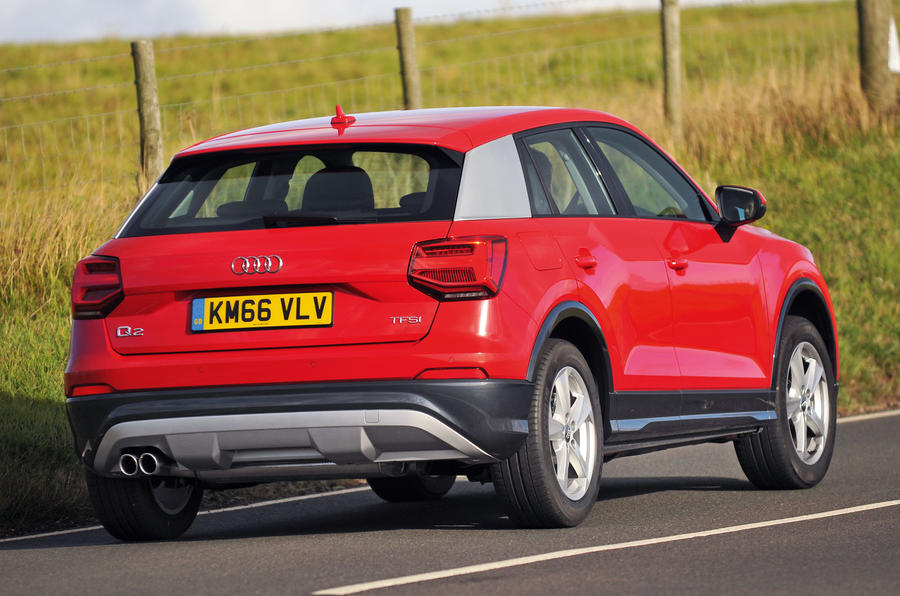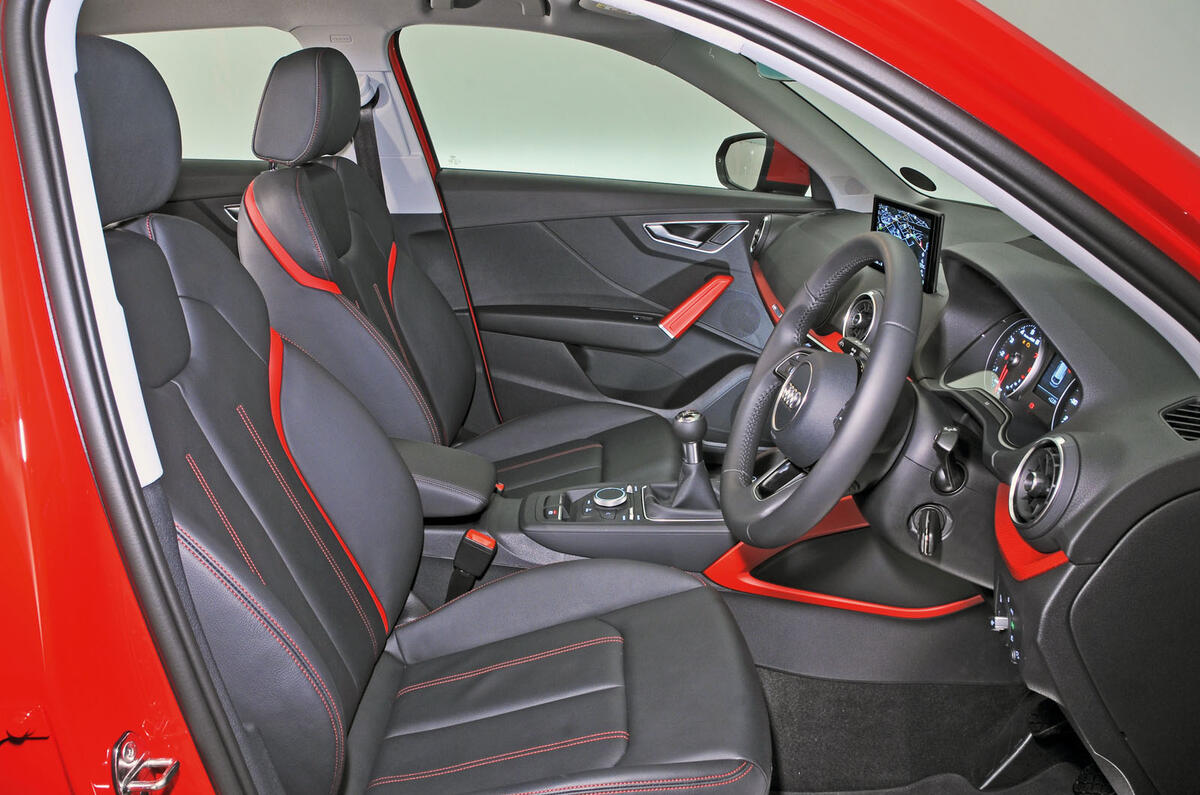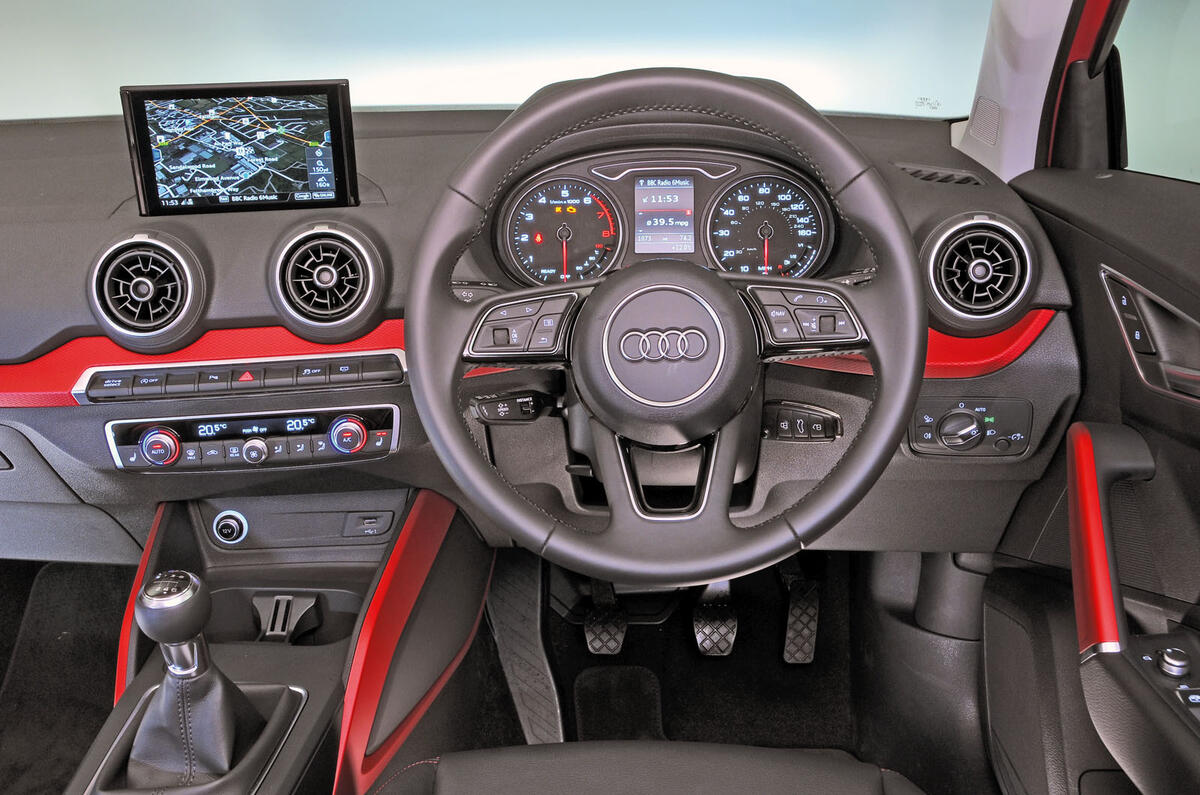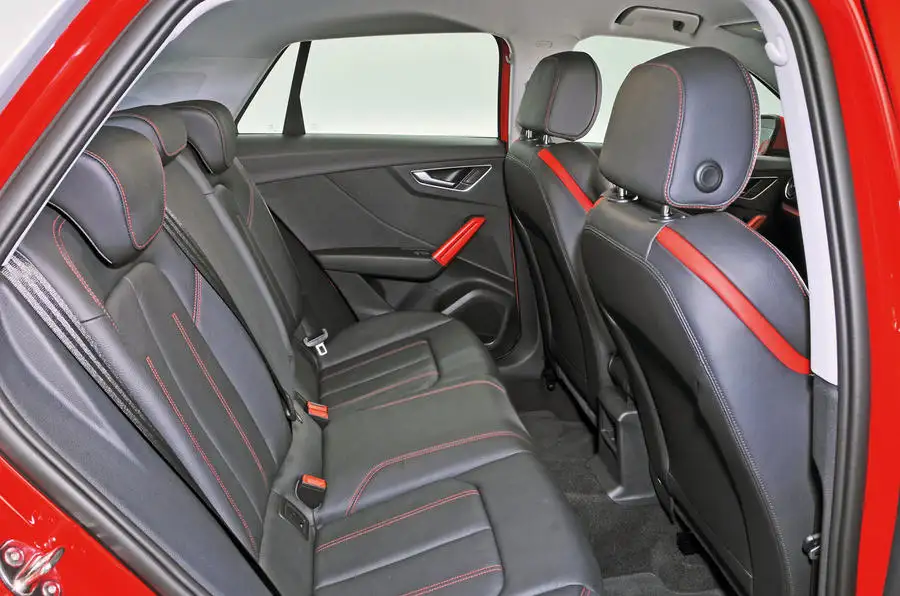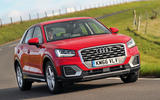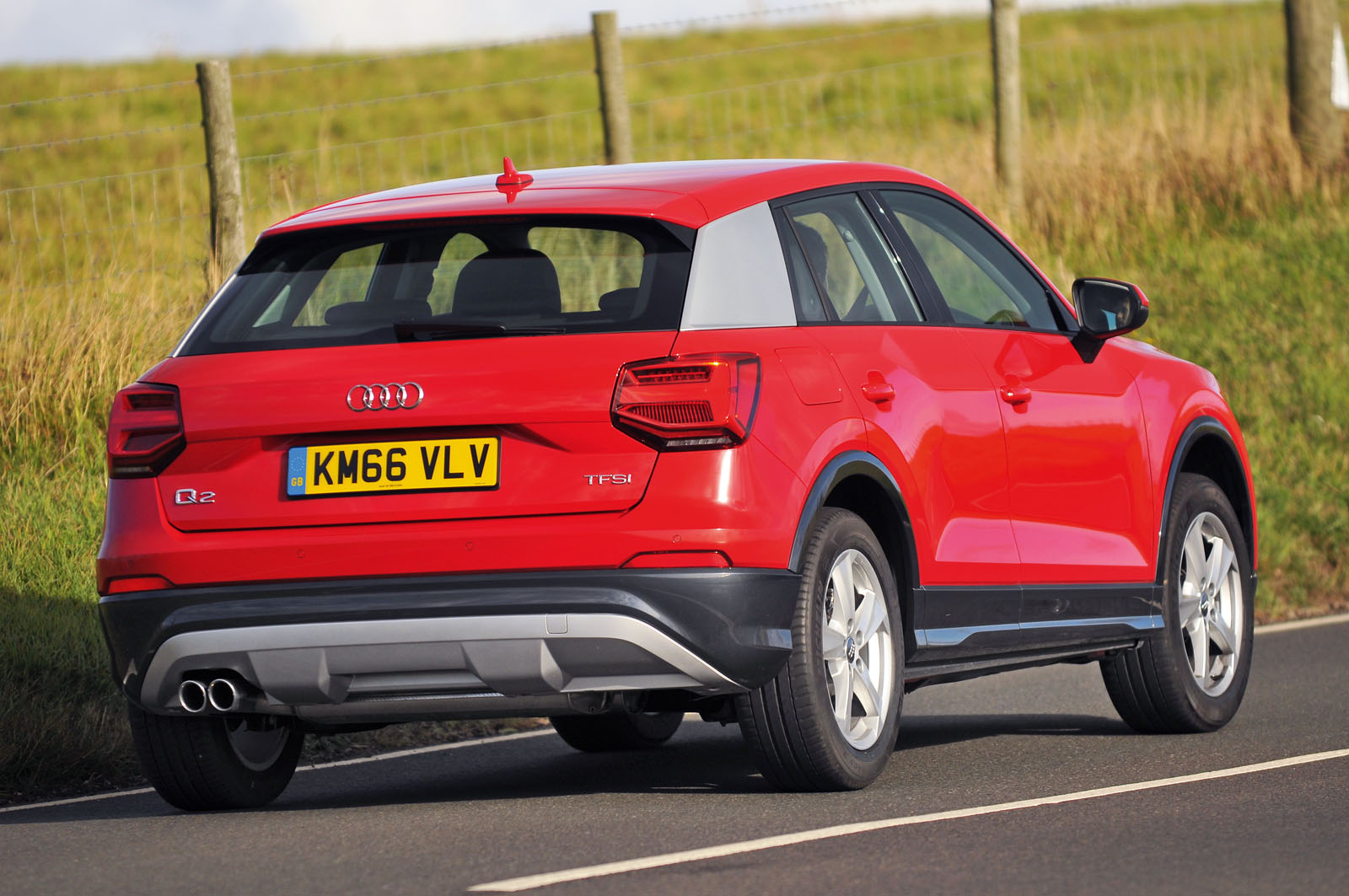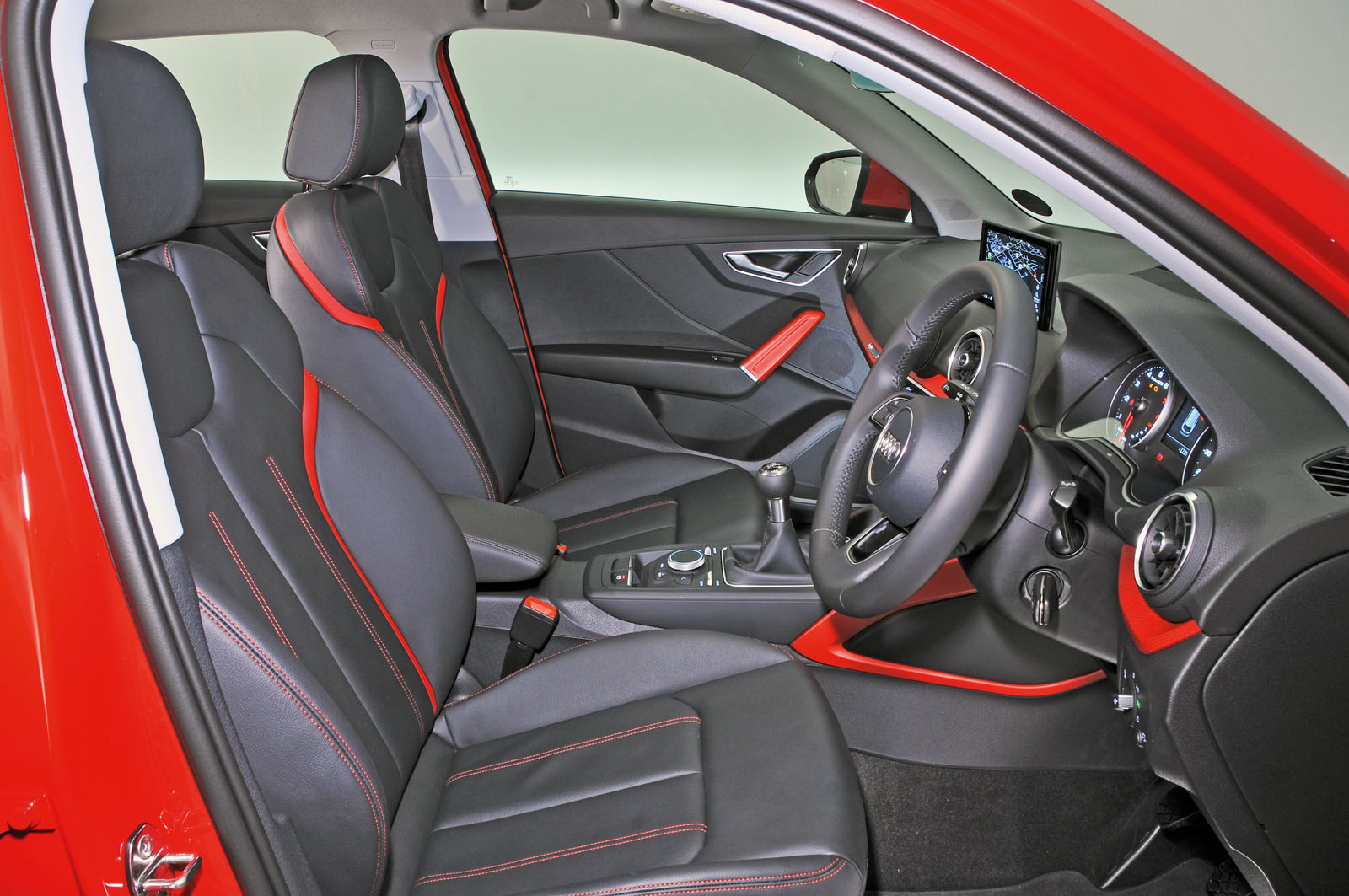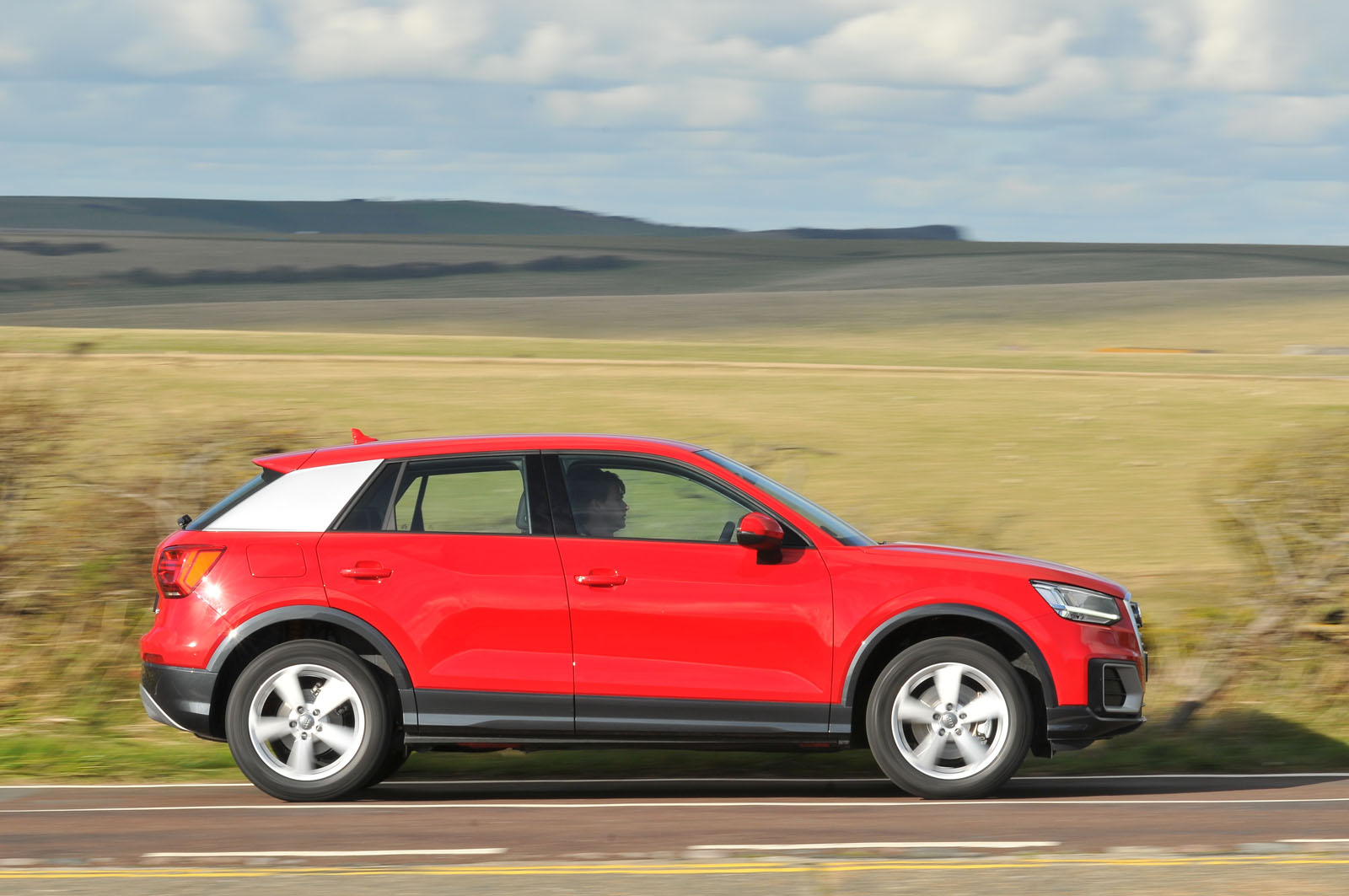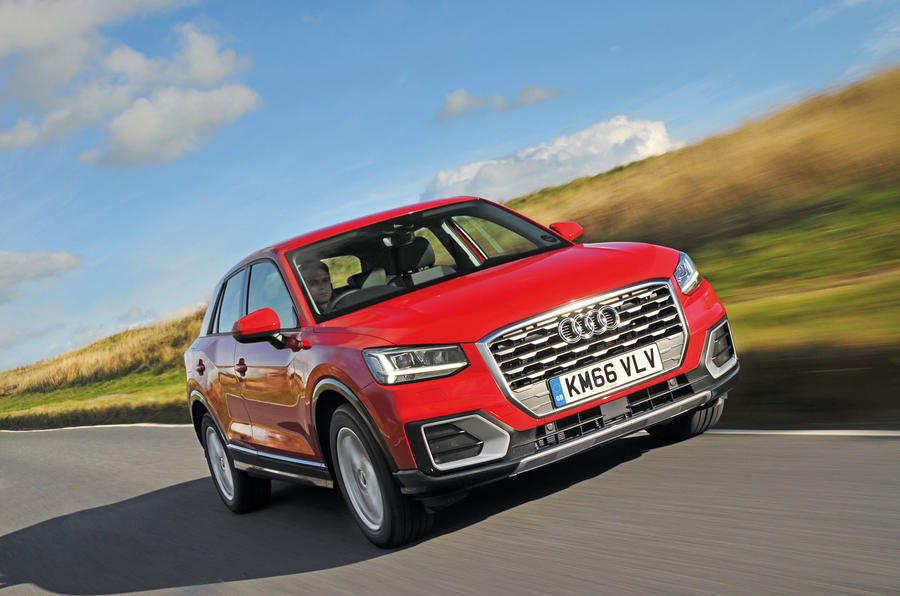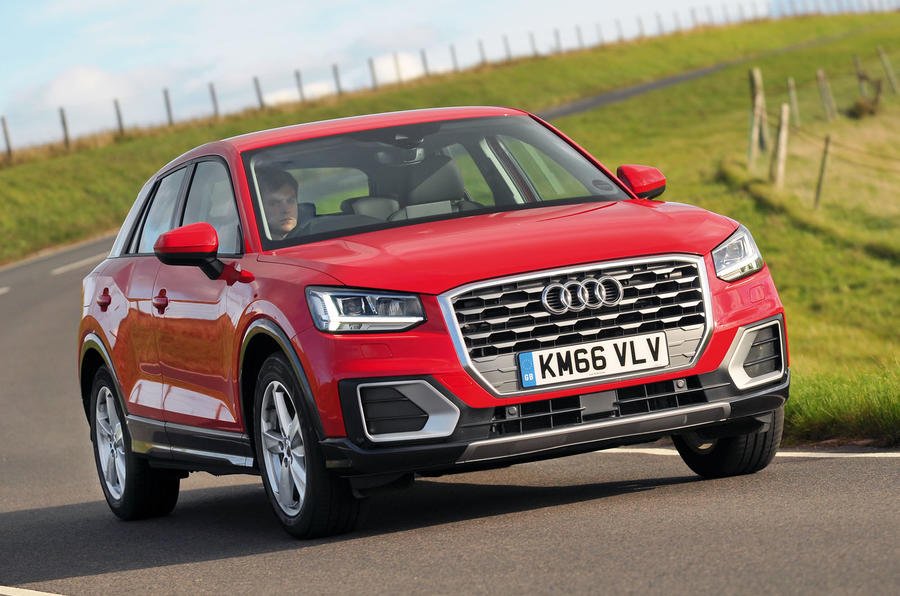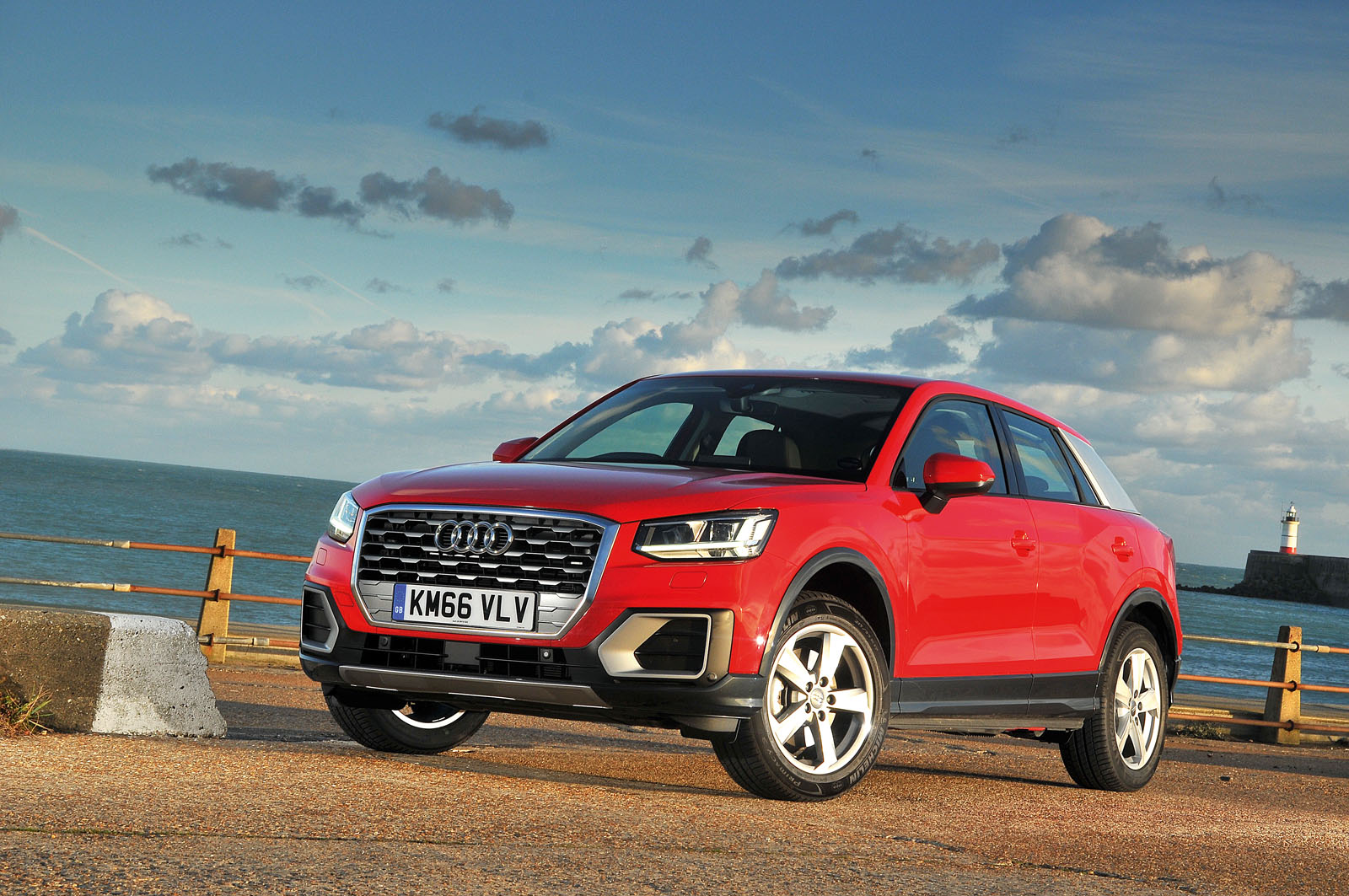Audi’s impressive run of compelling and high-quality interiors does not fall at the Q2 hurdle.
Derived for the most part from the latest Audi A3, the cabin towers over mainstream competition such as the DS 4 and Nissan Juke in terms of fit and finish.
It’s aesthetically pleasing, too, Ingolstadt having gone cleverly two-tone with a slightly revised dashboard in an effort to wring a little more dynamism from the familiar styling.
Side-by-side fingertip analysis would suggest that Audi has taken the opportunity to make some bottom-line savings compared with the material choices made in the A3, but none is dramatic enough to sully the first-rate impression the Q2 gives off.
Its proportions are essentially on the money, too. Given the model’s stunted length, you could hardly expect more space than it provides.
Leg room in the rear is equal to that of a well-packaged modern supermini, meaning that you’ll get an average-sized adult behind an average-sized adult, and because the roofline is modestly higher than in a hatchback, there’s the impression of greater space once seated.
Seating a third occupant in the rear would have to be a temporary arrangement, although the same could be said of the larger Audi Q3 and comes as no surprise anyway.
Given the right-sized nature of the cabin, it’s to Audi’s credit that there’s been no sacrifice of boot space practicality. Indeed, the manufacturer suggests there’s only a 15-litre capacity difference between the Q2 and Q3 – and at 405 litres, the crossover is rated as marginally more capacious than the A3 Sportback.
A double floor contributes to that, though, increasing volume in its lower position but leaving you with a mighty lip to negotiate when hauling items in and out.
The upper setting eliminates that – providing you with a totally flat load space when you lower the rear seats – and is probably the position most owners will opt for, even with the capacity forfeit.
Audi’s MMI system has evolved into an admirable bit of kit, and doubtless buyers will appreciate the fact that even the cheapest Q2 earns the basic set-up, incorporating both Bluetooth and DAB.
Expect both to operate faultlessly, functionality being one of MMI’s strongest suits. This is actually slightly easier (or more familiar, at least) with the dial-style controller than with the cost-option Virtual Cockpit, although the latter is likely to remain highly desirable come resale.
Our test car did without it but added sat-nav as part of Sport trim. The SD card-based system is highly commendable, and with an embedded data SIM and three months of Audi Connect thrown in, it adds Google Earth and Google Street View to its capabilities.
The standard phone interface means integration with Apple CarPlay and Android Auto is also seamless, as long as you don’t mind using the USB socket rather than Bluetooth to pair your mobile.
The standard stereo is okay but can be upgraded to Audi’s 10-speaker Sound System for £255, or to B&O’s 705W, 14-speaker set-up for £700.
As for trim levels, there are four to choose from - SE, Sport, S line and Edition 1. Entry-level models get 16in alloy wheels, halogen headlights, Audi's progressive steering and dynamic suspension set-up, rear parking sensors, cruise control and autonomous emergency braking as standard. Inside there is air conditioning, interior lighting and floor mats alongside Audi's MMI infotainment system.
Upgrade to Sport, and the Q2 is adorned with 17in alloy wheels, automatic lights and wipers, front sports seats and lots of aluminium interior trim, while opting for S line adds 18in alloy wheels, sports suspension, LED headlights, an aggressively-styled bodykit, a cloth and leather upholstery and a LED ambient interior lighting,
Topping the range is the Edition 1, which gains most of the luxuries on the S line trim and equips the Q2 with 19in alloy wheels, a Nappa leather upholstery, and an exclusive Quantum grey paint job.




